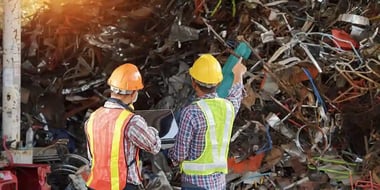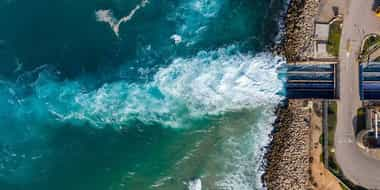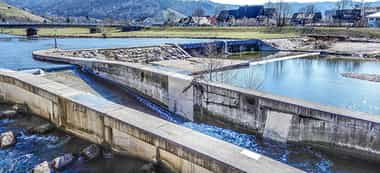The running gag (pun intended) is that California’s Assembly Bill 574 may be tough to swallow—the legislation would allow communities to put purified wastewater directly into the drinking water supply.
Ongoing droughts, especially in water-scarce and population-dense regions like California, are driving the consideration of multiple direct potable reuse projects for deployment across the country. Sensationalized as “toilet to tap,” the direct potable reuse process involves treating wastewater at a treatment facility and then directly injecting it into a water supply system.
Yoram Cohen, professor of chemical and biomolecular engineering at the University of California, Los Angeles,
tells CBS News that the phrase “toilet to tap” omits “the fact that there is a lot of treatment in between, so it gives the wrong perception."
The wastewater intensive purification process behind AB 574 would run a proportion of the 1.3 billion gallons of waste water generated in Southern California each day through a three-step treatment at Fountain Valley’s
Groundwater Replenishment System. Jointly developed by Orange County Water District (OCWD) and Orange County Sanitation District (OCSD), the facility is the largest water purification project of its kind in the world.
Step one of the treatment begins with microfiltration of the treated waste water, which removes solids, oils and bacteria. The yielded liquid goes through reverse osmosis, which pushes it through a fine plastic membrane that filters out viruses and pharmaceuticals. In the third and final step, the water is treated with ultraviolet light to kill remaining organic compounds, before joining the main groundwater supply.
Of course the water must pass strict quality controls to meet legal standards and distribution to households. According to OCWD’s
December report about the feasibility of direct potable reuse, “Those criteria could incorporate a level of public health protection as good as or better than what is currently provided by conventional drinking water supplies.”
"It's a watershed moment right now, we're seeing widespread acceptance of these technologies," OCWD General Manager Mike Markus
told CNN in 2015 about efforts then to ramp up non-potable water recycling efforts. Read More
"As the (water) shortages become more extreme and water supplies are cut, it has raised awareness that we need to find alternative resources."
Now, two years after Markus’ comment, California’s debilitating drought has birthed AB 574. Orange County has contributed recycled water to the drinking water supply since 2008. The treated wastewater provides enough drinking water for almost 800,000 people. The OCWD says the water it recycles meets or exceeds all federal and state drinking water standards.
“It’s a highly thought-out scientific approach that is safe and plentiful and cost-effective,” Mehul V. Patel, OCWD director of water production,
tells capitolweekly.com.
The cost to treat the water is $800 per acre foot as compared to $1,000 per acre foot for using imported water, Patel
says. “We’re trying to be cost competitive with imported water.
But what about that “yuck factor” that accompanies the thought of something in our toilets ending up in our water glasses?
The understandable aversion, although difficult, is not impossible to overcome, according to
CNN.
"The disgust comes from intuitive concepts of contagion," says Carol Nemeroff, professor of social and behavioral sciences at University of Southern Maine. She
tells CNN: "It is magical in nature, the same type of thinking that underlines voodoo practices.”
Nemeroff
suggests a perceptual cue is one way to get past the aversion. “If you can see sparkling fresh, clear water, and taste it that helps to overcome the concept. The contagion type thinking decreases with familiarity.” She
adds that necessity can also be a key driver, too. "If you're desperate you'll override anything for survival."
The water recycling and reuse global market is seeing double-digit growth due to issues of water supply, water scarcity, water supply cost, and regulatory requirements. According to BCC Research’s new report
Global Markets and Technologies for Water Recycling and Reuse, the market should nearly double from almost $12.2 billion in 2016 to about $23 billion in 2021, with a 13.1% CAGR.




